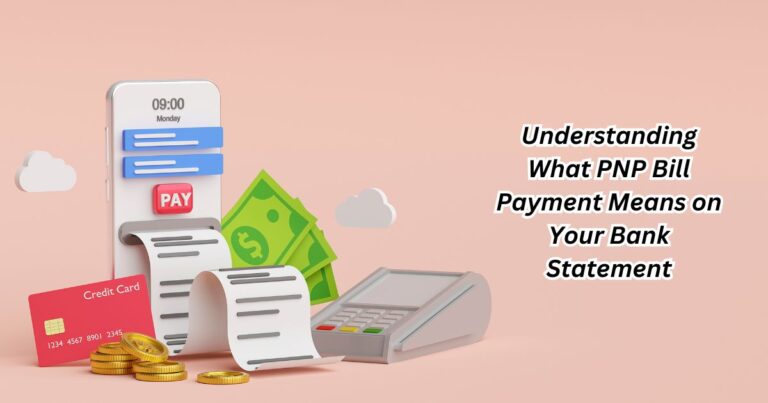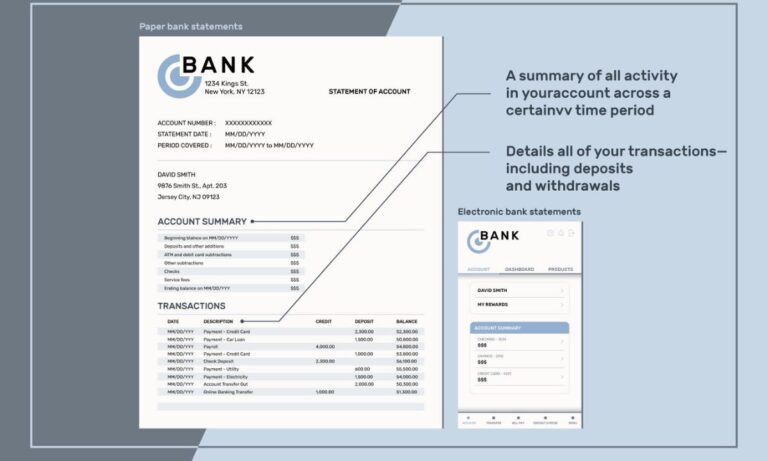How Savvy Managers leverage Accounting Intelligence?
Accounting intelligence tools can give managers actionable insights from their company’s financial data. By analyzing trends and performing predictive analysis, these resources allow savvy business leaders to better understand past performance, identify current opportunities and risks, and make forward looking strategic decisions. Integrating accounting intelligence into their decision-making process allows managers to leverage data to improve budgeting, optimize operations, and drive their business forward in smart and meaningful ways.
Decoding The Financials: Unleashing Hidden Business Truths
Accounting reports hold a wealth of valuable information about your company’s past performance and current state. Taking time to analyze key financial statements like the income statement, balance sheet, and cash flow statement can uncover trends, reveal inefficiencies, and point out areas for improvement. Looking at monthly or quarterly changes over time allows problems to surface before they become serious issues. With practice and experience, financial statements become easier to understand.
Simple ratios are powerful diagnostic tools that distill complex metrics into clear signs of a business’s health. Calculations like gross margin, operating margin, inventory turnover, receivables turnover and debt ratios shine a light on the inner workings of your organization in easy-to-grasp terms. Comparing ratios to industry benchmarks and your own historical performance signals when adjustments may be needed.
Spotting Red Flags and Growth Opportunities
Beyond compliance, financial reports offer a window for discovering weaknesses and untapped potential. Unexpected dips or rises in certain metrics may signify operational challenges or demand shifts to investigate further. Alternatively, outperforming areas represent chances to learn strategies for enhancing other divisions. Asking questions of the numbers leads to insights that fuel continuous improvement efforts.
Scanning accounting data with a critical eye tuned to your strategic objectives ensures no stone goes unturned. Unexplained variances or cost spikes could conceal inefficiencies, while climbing expenses may herald new growth drivers. With curiosity and analysis red flags morph into opportunities for positive change.
Speak Fluent Accountant Vital Metrics Every Manager Must Know

Every leader must understand key performance indicators widely used across finance and operations teams. Gaining familiarity with profitability benchmarks like gross margin, operating margin, net income margin and return on assets allows savvy communication with stakeholders. Calculating and monitoring these numbers yourself keeps strategic decision making grounded in reality.
Closely tracking working capital levels through metrics like inventory turnover, receivables collection period and payables deferral period keeps cash flow optimized. Beyond compliance requirements financial literacy equips managers to guide discussions and make data informed proposals up and down the organizational ladder.
Liquidity and Solvency Signposts
A business’s short-term viability and long-term resilience depend on steadfast liquidity and solvency. The current ratio which compares current assets to current liabilities indicates the ability to meet upcoming obligations. The quick or acid-test ratio omits inventory to paint a more urgent picture.
Meanwhile, the debt to equity and times-interest-earned ratios protect against insolvency risks. Together, these signposts flag hazards on the horizon, ensuring timely actions like adjusting credit terms or refinancing debt as needed. Proactivity around liquidity management and capital structure safeguards long-term sustainability.
Efficiency and Productivity Gauges
Accounting ratios shedding light on operational effectiveness include inventory turnover, receivables collection period, payables deferral period and asset turnover. Faster inventory velocity through higher turnover means cost savings. Receivables and payables metrics point to optimal working capital management. Asset turnover gauges the revenue generated per dollar invested in resources.
Together, these efficiency gauges pinpoint frictional expenses or bottlenecks limiting growth. Opportunities surface to streamline processes, minimize idle assets and inventory, speed cash recovery and leverage existing investments to a greater extent. Maximizing efficiency further unleashes productivity potential.
Control Your Costs: Strategies For Proactive Profitability Management

Profitability depends heavily on managing expenses and optimizing costs companywide. Rather than make cuts reactively, smart managers continuously assess cost drivers proactively through variance analysis of financial reports. Uncovering unnecessary line items allows strategic reductions while sustaining operations. Assigning cost responsibilities encourages ownership that curtails wasteful spending.
Understanding The Cost Equation
Understanding how costs behave at different production levels helps make good decisions. Knowing costs helps determine the best price point and production amount
| Production Level | Fixed Costs | Variable Costs | Total Costs |
| 0 units | $100,000 | $0 | $100,000 |
| 100 units | $100,000 | $5 per unit = $500 | $100,500 |
| 200 units | $100,000 | $5 per unit = $1,000 | $101,000 |
All expenditures fit into three basic categories fixed, variable and semi-variable costs. Knowing which costs remain constant regardless of activity volume and which fluctuate with sales volume or production volume empowers targeted cost saving initiatives. Prioritizing areas of naturally variable or discretionary spending offers the most leverage for boosting profits.
Cost-Cutting Strategies From Industry Leaders
Successful organizations innovate creative tactics like rightsizing operations for current demands, reducing inventory levels through lean techniques, renegotiating supplier agreements or changing distribution models. Others consolidate real estate footprints or insurance plans, outsource non-core functions, or automate manual tasks. Benchmarking multi-faceted strategies of admired peers sparks new ideas suited for your unique business.
Actionable Tips For Cost Optimization
Some low-hanging fruit approaches include cancelling unused vendor or employee contracts, re-evaluating postage and shipping practices, and minimizing office supplies. Consolidating utility plans, reworking service level agreements or transitioning to cloud based IT solutions often saves as well. Distributing cost accountability and empowering employees at all levels to constantly scan for waste fuels ongoing optimization efforts companywide.
Forecasting For Fair Weather: How To Soar With Financial Projections?
Cash flow, income statements and balance sheets all contain inherent forecasts that steer tactical execution and long-term planning. However, crafting formal quantitative projections strengthens decision-making with testable hypotheses. Compiling past trends, current performance data and qualitative assumptions informs revenue, expense, margin and cash flow estimates. Sensitivity analysis adjusts scenarios to help identify risks to budgets.
Crafting Accurate and Actionable Forecasts
Forecasts gain credibility with reasonable, evidence-based assumptions and methodology documentation. Testing forecast reliability through regular comparisons to actual results and addressing variances keeps the process agile. Detailed periodic forecasts plus condensed annual outlooks equip teams to align goals, time initiatives, and allocate resources strategically based on anticipated conditions. Re-forecasting accounts for changing realities to optimize strategies in flight.
Transform Data Into Decisions: Visualizing Accounting For Agile Leadership
Meaningful accounting information inspires action, but mountains of tables and figures often overwhelm. Data visualization transforms raw data into clear, shareable stories through curated charts, graphics and scorecards. Patterns jump off the page in dashboards comparing metrics over time, between peers or business units. Pivot tables and heat maps unearth nuances that tables alone miss. Financial KPI tracking becomes instinctual through infographics exposing priorities at a glance.
Bringing Accounting Data To Life
Storytelling with visuals draws teams, executives and boards into collaborative analysis and planning. Animation illustrates complex cause and effect relationships between metrics in simple terms stakeholders understand. Animated financial reports captivate while conveying multi-year trends and projections intuitively. Leveraging multimedia invites contribution from varied learning and communication styles to shape decisions from all angles.
Examples Of Effective Visualization In Action
Metrics-based OKR templates keep departments rowing jointly upstream. Funnels visualize projected progress through forecasting, sales pipelines or project stages. Strategy maps and risk radar charts outline dependencies and vulnerabilities clearly. adapting raw data into visually stimulating, easy-to-digest formats transforms mere compliance into an engaging springboard for strategy alignment and organizational agility.
FAQ’s
What is Accounting Intelligence?
It’s the ability to understand financial reports and metrics.
Why is it Important for Managers?
To strengthen decision making and oversight of business performance.
How can Accounting data Inform Strategies?
Highlight costs, margins, budgets to develop goals and initiatives.
What Strategies does it Support?
Operations, marketing, product development by revealing areas for improvement.
How does Financial Literacy Aid Managers?
Helps allocation of resources, facilitates planning, ensures legal/regulatory compliance.
Conclusion
Accounting information provides valuable insights for managers to effectively lead their businesses. How Savvy Managers Leverage Accounting Intelligence? They can analyze financial data to develop strategies, monitor performance, and make informed decisions about where to invest resources. Using accounting reports smartly helps ensure a company’s long term success and continued growth.






